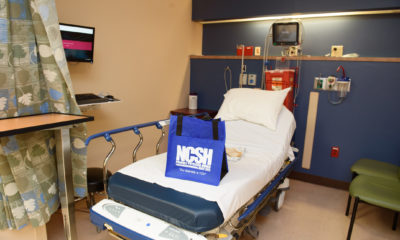Access your own patient portal, provided by NCSH.
Oral & Maxillofacial Surgery
What Is Le Fort Surgery?
Tue, Aug 23, 2022

How the Le Fort Osteotomy Corrects Misalignments in the Jaw
Le Fort surgery is an orthopedic procedure most often used to correct deformities and misalignments in the midface. It is a safe method that has made it relatively simple for surgeons to provide patients with greater function and improved appearance.
Le Fort Osteotomy–An Orthognathic Surgery

The Le Fort procedure is one of several types of orthognathic surgeries, another term for jaw surgeries. Jaw surgeries are mostly used to correct irregularities and deformities. Surgeons can realign the jaws and teeth to improve both appearance and function.
Orthognathic surgery is usually used after unsuccessful or incomplete treatment with orthodontic devices, such as braces. Even when performed, these surgeries usually require orthodontic work before and after the procedure for the best results.
One type of orthognathic surgery is the Le Fort procedure. The Le Fort I surgery is used most often, with II and III reserved for the most severe facial deformities.
To perform Le Fort I, a surgeon makes a horizontal incision in the mouth between the upper lip and the gums of the upper teeth. This opening gives the surgeon access to the upper jaw. Once they have made the fixes or corrections, the surgeon closes the incision with stitches that dissolve during recovery.
What Does Le Fort I Surgery Treat?
The simplicity of the Le Fort procedure allows surgeons to access the bones of the upper jaw and treat several conditions:
- Malocclusion. This is the most common reason for the procedure, a misalignment of the teeth and jaws. Le Fort surgery can correct an underbite, overbite, or lateral (side-to-side) misalignment.
- Anterior Open Bite. A more unusual issue is an open bite, a malocclusion that prevents the top and bottom teeth from meeting.
- Le Fort Fractures. Le Fort fractures occur in the midface. A surgeon may use Le Fort I osteotomy fixation with plates or screws to hold the bones in place and restore the proper alignment of the patient’s jaw. The Le Fort procedure allows the surgeon to reach the fractured and misaligned bones caused by trauma to the face.
- Maxillary Atrophy. More common in older adults, a surgeon can use Le Fort I to reach and replace atrophied bones in the upper jaw with prosthetics and implants.
- Obstructive Sleep Apnea. If a deformity in the jaw is obstructing the airway in a patient with sleep apnea, a surgeon can correct it with the Le Fort procedure.
- Tumors and Cysts. The procedure can also give surgeons access to problematic cysts or tumors that need to be removed.
Who Needs the Le Fort Procedure?
Your surgeon will explain why you or your child might need this type of surgery. The most common reason to use the procedure is the correction of malocclusion. If you or your child has tried orthodontics without adequate results, a surgeon might recommend surgery.
While many patients exhibiting jaw deformities that need correction are children, surgeons usually wait to correct them until the jaw and face have stopped growing. This is typically between 15 and 18 years old. Performing the surgery too early can result in the child outgrowing the fix and needing additional surgery.
In some cases, a surgeon might recommend surgical treatment earlier. Studies have shown that orthognathic procedures are relatively safe but do present a greater risk of adverse events in children under 6 years of age.
Recovering from Le Fort I Surgery
Your surgeon will describe what to expect in recovery and provide detailed instructions. Anticipate having a lot of swelling in your mouth and face, which could last a couple of weeks. The swelling often causes more discomfort than pain from the surgery. You can use ice packs and any medications your surgeon prescribes to reduce swelling.
Diet post-surgery is very important. Your surgeon will give more explicit details, but you will likely need to stick with liquids for a few days. After that, limit your diet to soft foods for up to six weeks. Eating anything that is too hard can damage the corrections made during surgery.
You will also likely need post-surgical orthodontic treatment. Orthodontic devices will help settle the jaw and teeth into the correct position. This treatment can take up to nine months.
Our surgeons are experts in providing safe and effective treatment with the Le Fort procedure. To talk to one of our specialists about the procedure, request an appointment today.
RELATED NEWS

What Conditions Require Jaw Surgery?
About Corrective Jaw Surgery and Who Needs It Orthognathic surgery, also known as jaw or jawline surgery, corrects problems with the jaw bones that affect function, appearance, or both. Some people need corrective jaw surgery…
Continue Reading

Your Questions About Corrective Jaw Surgery Answered
For many people, correcting misaligned teeth means wearing braces for a time. Some people may need minor dental procedures, like tooth extractions, to correct their bite and straighten their teeth, but for the majority, the…
Continue Reading
Stay Current
Educational Articles & More
View News & Press
